James A. Duke, Ph.D.
See book keywords and concepts |
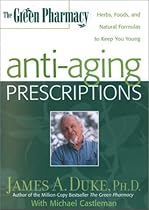 In 1978, the German government established Commission E, a panel of physicians, pharmacists, pharmacologists, toxicologists, epidemiologists, and other professionals familiar with the vast body of historical and scientific literature pertaining to herbs and medicinal plants. The panel's mission is to pass judgment on the safety and effectiveness of various herbs as treatments for human health complaints. To date, Commission E has reviewed more than 300 herbs and has published a report (or monograph) on each herb's therapeutic dosage, benefits, and side effects. In 1978, the German government established Commission E, a panel of physicians, pharmacists, pharmacologists, toxicologists, epidemiologists, and other professionals familiar with the vast body of historical and scientific literature pertaining to herbs and medicinal plants. The panel's mission is to pass judgment on the safety and effectiveness of various herbs as treatments for human health complaints. To date, Commission E has reviewed more than 300 herbs and has published a report (or monograph) on each herb's therapeutic dosage, benefits, and side effects. |
Rebecca Wood
See book keywords and concepts |
 For a vermifuge protocol, see Michael Moore's medicinal plants of the Desert and Canyon West. Moore does not recommend it as an abortifacient or a menstrual stimulant, despite its reputation as such. "There have been many cases of poisoning from taking large amounts of the tea or the distilled oil, and it seldom works. On the other hand, all parts of the plant are effective externally for fungal infections, barber's itch, athlete's foot, and ringworm, as well as being somewhat antibacterial." It reduces vata. For a vermifuge protocol, see Michael Moore's medicinal plants of the Desert and Canyon West. Moore does not recommend it as an abortifacient or a menstrual stimulant, despite its reputation as such. "There have been many cases of poisoning from taking large amounts of the tea or the distilled oil, and it seldom works. On the other hand, all parts of the plant are effective externally for fungal infections, barber's itch, athlete's foot, and ringworm, as well as being somewhat antibacterial." It reduces vata. |
Textbook of Natural Medicine 2nd Edition Volume 2Michael T. Murray, ND
See book keywords and concepts |
| Pharmacognosy, phytochemistry, medicinal plants. Paris: Lavosier. 1995
25. Embodden W. Narcotic plants. New York, NY: Collier Books. 1980
26. Leathwood P, Chauffard F, Heck E, Munoz-Box R. Aqueous extract of valerian root (Valeriana officinalis L.) improves sleep quality in man. Pharmacol Biochem Behavior 1982; 17: 65-71
27. Balderer G, Borbely AA. Effect of valerian on human sleep. Psychopharmacol 1985; 87: 406^09
28. Leathwood PD, Chauffard F. Aqueous extract of valerian reduces latency to fall asleep in man. Planta Medica 1982; 54: 144-148
29. Lindahl O, Lindwall L. |
| Inhibitors of cyclic AMP phosphodiesterase in medicinal plants. J Med Plant Res 1981; 43: 18-23
25. Petkov E, Nikolov N, Uzunov P. Inhibitory effects of some flavonoids and flavonoid mixtures on cyclic AMP phosphodiesterase activity of rat heart. J Med Plant Res 1981; 43: 183-186
26. Beretz A, Stierle A, Anton R et al. Role of cyclic AMP in the inhibition of human platelet aggregation by quercetin, a flavonoid that potentiates the effect of prostacyclin. Biochem Pharm 1981; 31: 3597-3600
27. Amellal M, Bronner C, Brincon F et al. |
| Herbs, Spices, and medicinal plants 1984; 1: 235-280
38. Pfister R. Problems in the treatment and after care of chronic dermatoses. A clinical study on hametum ointment. |
| Studies of the activities of tannins and related compounds from medicinal plants and products. I. Inhibitory effects on lipid peroxidation in mitochondria and microsomes of liver. Chem Pharm Bull 1983; 31: 1625-1631
105. Subramanian SS. (-)Epicatechin as an anti-diabetic drug. Ind Drugs 1981; 18: 259
106. Allen FM. Blueberry leaf extract. Physiologic and clinical properties in relation to carbohydrate metabolism. JAMA 1927; 89: 1577-1581
107. Bever B, Zahnd G. Plants with oral hypoglycemic action. Quart J Crude Drug Res 1979; 17: 139-196
108. Caselli L. |
| Herbs Spices medicinal plants 1986; 1: 167-184
17. Zlatkov NB, Ticholov JJ, Dourmishev AL. Free fatty acids in the blood serum of psoriatics. Acta Derm Vener (Stockh) 1984;
64: 22-25
18. Bittiner SB, Tucker WFG, Cartwright I et al. A double-blind, randomized, placebo-controlled trial of fish oil in psoriasis. Lancet 1988; i: 378-380
19. Grimmunger F, Mayser P, Papavassilis C. A double-blind, randomized, placebo-controlled trial of n-3 fatty acid based lipid infusion in acute, extended guttate psoriasis. Clin Invest 1993; 71: 634-643
20. Maurice PDL, Allen BR, Barkley ASJ et al. |
Michael Tierra
See book keywords and concepts |
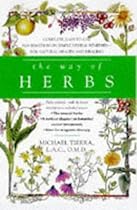 FENUGREEK (TRIGONELLA FOENUMGRAECUM)
Fenugreek is one of the oldest recorded medicinal plants and one of the most versatile of the seed spices. The seeds are tonic, astringent, demulcent, emollient and expectorant. Fenugreek is useful for all mucous conditions and lung congestion. A decoction is made using one ounce of the crushed seeds with seven crushed black peppercorns in a pint of water to relieve congestion and eliminate excess mucus. The decoction of fenugreek alone is useful for ulcers and inflamed conditions of the stomach and intestines. FENUGREEK (TRIGONELLA FOENUMGRAECUM)
Fenugreek is one of the oldest recorded medicinal plants and one of the most versatile of the seed spices. The seeds are tonic, astringent, demulcent, emollient and expectorant. Fenugreek is useful for all mucous conditions and lung congestion. A decoction is made using one ounce of the crushed seeds with seven crushed black peppercorns in a pint of water to relieve congestion and eliminate excess mucus. The decoction of fenugreek alone is useful for ulcers and inflamed conditions of the stomach and intestines. |
Textbook of Natural Medicine 2nd Edition Volume 1Michael T. Murray, ND
See book keywords and concepts |
| Herbs Spices medicinal plants 1986; 1: 167-184
3. Hikino H, Kiso Y, Wagner H, Fiebig. Antihepatotoxic actions of flavanolignans from Silybum marianum fruits. Planta Medica 1984; 50: 248-250
4. Wagner H. Plant constituents with antihepatotoxic activity. In: Beal JL, Reinhard E, eds. Natural products as medicinal agents. Stuttgart: Hippokrates-Verlag. 1981
5. Vogel G, Tuchweber B, Trost W, Mengs U. Protection against Amanita phalloides intoxication in beagles. Toxicol Appl Pharm 1984; 73: 355-362
6. Serne EH, Toorians AWF, Gietema JA et al. Amanita phalloides, a potentially lethal mushroom. |
| Satayavati GV, Raina MK, Sharma M. medicinal plants of India, vols 1 and 2. New Delhi: Indian Council of Medical Research. 1976
13. Hadden JW. Immunomodulators in the immunotherapy of cancer and other diseases. Trends Pharm Sci 1982; 3: 191-194
14. Srivastva R, Puri V, Srimal RC, Dhwan BN. Drug Res 1986; 30
15. Ziauddin M, Phansalkar N, Patki P et al. Studies on the immunomodulatory effects of Ashwagandha. J Ethnopharmacol 1996; 50: 69-76
16. Agarwal S, Agrawal SS. Hepatoprotective studies on Phyllanthus emblica Linn, and quercetin. Indian J Exp Biol 1995; 33: 261-268
17. |
| Handbook of northeastern Indian medicinal plants. Lincoln, MA: Quarterman. 1986: p 156
8. Cunningham S. Encyclopedia of magical herbs. St. Paul, MO: Llewelyn Publications. 1985: p 228
9. Wehland J, Henkart M, Klausner R, Sandoval IV: role of microtubules in the distribution of the Golgi apparatus, taxol and microinjected anti-alpha-tubulin antibodies. Proc Nat Acad Sci USA 1983; 80: 4286-4290
10. Rowinsky EK, Donehower RC, Jones RJ et al Microtubule changes and cytotoxicity in leukemic cell lines created with taxol. Cancer Res 1988; 48: 4093^100
11. |
| Choline content in some medicinal plants. Farm Polska 1966; 22: 181-184
4. Devys M. Triterpene alcohols from dandelion (T. dens-leonis) pollen. CR Acad Sci Ser D. 1969; 269: 798-801
5. Williams CA, Goldstone F, Greenham J. Flavonoids, cinnamic acids and coumarins from the different tissues and medicinal preparations of Taraxacum officinale. Phytochemistry 1996;
42: 121-127
6. Faber K. The dandelion Taraxacum officinale. Pharmazie 1958; 13: 423-436
7. Susnik F. Present state of knowledge of the medicinal plant Taraxacum officinale Weber. Med Razgledi 1982; 21: 323-328
8. Bohm K. |
| Determination of germanium in medicinal plants by atomic absorption spectrometry with electrothermal atomization. Chem Pharm Bull 1980; 28: 2687-2691
6. Duke JA. Handbook of medicinal herbs. Boca Raton, FL: CRC Press. 1985: p 337-338
7. Brekhman II, Dardymov IV. New substances of plant origin which increase nonspecific resistance. Ann Rev Pharmacol 1969; 9: 419^30
8. Brekhman II, Dardymov IV. Pharmacological investigation of glycosides from ginseng and Eleutherococcus. Lloydia 1969; 32: 46-51
9. Petkov W. Pharmacological studies of the drug P. ginseng CA. Meyer. |
| Quercetin is consistently the most active of the flavonoids in experimental studies and many medicinal plants owe much of their activity to their high quercetin content.
Citrus bioflavonoids
Citrus bioflavonoid preparations can include rutin, hesperidin, quercitrin, and naringin. Most of the clinical research on rutin and crude bioflavonoid complexes occurred before 1970. Since then, most of the clinical research has utilized a standardized mixture of rutino-sides known as hydroxyethylrutosides (HERs). |
Thomas Bartram
See book keywords and concepts |
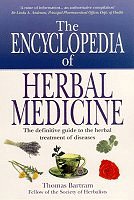 Important components of Floradix preparations are herbal extracts of various medicinal plants. Those rich in iron include: Stinging Nettle, Couch grass roots and algae Macrocystis pyrifera and Spinach. Extracts to aid digestion and metabolism (as well as strengthen the system) include: Hawthorn for heart function; Fennel, Angelica root and Wormwood for digestion; and Juniper berries to aid metabolism. See: SALUS-HAUS.
FLUID EXTRACTS. Another term for liquid extracts, chiefly used in America and among a modern generation of herbal practitioners. Important components of Floradix preparations are herbal extracts of various medicinal plants. Those rich in iron include: Stinging Nettle, Couch grass roots and algae Macrocystis pyrifera and Spinach. Extracts to aid digestion and metabolism (as well as strengthen the system) include: Hawthorn for heart function; Fennel, Angelica root and Wormwood for digestion; and Juniper berries to aid metabolism. See: SALUS-HAUS.
FLUID EXTRACTS. Another term for liquid extracts, chiefly used in America and among a modern generation of herbal practitioners. |
Rebecca Wood
See book keywords and concepts |
 Fenugreek is potent indeed, not currently a popular spice in Western countries but one of the oldest known and most valued medicinal plants.
Health Benefits Fenugreek is a bitter aromatic. It tonifies the liver and kidneys and the male sexual organs. It increases milk flow, stimulates the uterus (not for use in pregnancy, though it is excellent for postpartum use), enhances digestion, helps treat allergies, and has antiparasitic and antitumor effects. Fenugreek is helpful for wasting diseases, gout, anemia, and debility. Fenugreek is potent indeed, not currently a popular spice in Western countries but one of the oldest known and most valued medicinal plants.
Health Benefits Fenugreek is a bitter aromatic. It tonifies the liver and kidneys and the male sexual organs. It increases milk flow, stimulates the uterus (not for use in pregnancy, though it is excellent for postpartum use), enhances digestion, helps treat allergies, and has antiparasitic and antitumor effects. Fenugreek is helpful for wasting diseases, gout, anemia, and debility. |
Thomas Bartram
See book keywords and concepts |
 A knowledge of healing by medicinal plants and barks enabled these simple pious Quakers to render aid to other settlers and to the Indians from whom they learnt the art of healing. It is believed their activities would have been devoted exclusively to healing had they not received a commission from King George III to explore and report on the natural history of the country. The Bartrams' talent in the practice of natural medicine impressed the Swedish explorer/botanist Peter Kalm who noted formulae in his diary. A knowledge of healing by medicinal plants and barks enabled these simple pious Quakers to render aid to other settlers and to the Indians from whom they learnt the art of healing. It is believed their activities would have been devoted exclusively to healing had they not received a commission from King George III to explore and report on the natural history of the country. The Bartrams' talent in the practice of natural medicine impressed the Swedish explorer/botanist Peter Kalm who noted formulae in his diary. |
J. E. Williams, O.M.D.
See book keywords and concepts |
 Berberine: This is a naturally occurring, yellow-colored bitter alkaloid found in many important medicinal plants like goldenseal (Hydrastis canadensis), the Chinese herb coptis/huang Han (Coptidis chi-nensis), and Oregon grape root (Berberis aquifolium). It is prepared as a concentrated standardized extract for medicinal purposes, and is effective against both gram-negative and gram-positive bacteria, fungi, protozoa, and viruses.
I use it for gastrointestinal and urinary tract infections typically in dosages ranging from 200-400 mg, two to four times daily. Berberine: This is a naturally occurring, yellow-colored bitter alkaloid found in many important medicinal plants like goldenseal (Hydrastis canadensis), the Chinese herb coptis/huang Han (Coptidis chi-nensis), and Oregon grape root (Berberis aquifolium). It is prepared as a concentrated standardized extract for medicinal purposes, and is effective against both gram-negative and gram-positive bacteria, fungi, protozoa, and viruses.
I use it for gastrointestinal and urinary tract infections typically in dosages ranging from 200-400 mg, two to four times daily. |
Michael Castleman
See book keywords and concepts |
 And researchers are continually finding new uses for medicinal plants.
Acceptance Grows
These days, ever-increasing numbers of people are returning to herbs—or learning about them for the first time. Herbal beverage teas line supermarket shelves, and most health food stores do a brisk business in medicinal herb teas and tinctures (the liquid form of the herb plus alcohol).
Recently a woman who was about to begin chemotherapy following surgery to remove a malignant colon tumor met with her oncologist, Barry Rosenbloom, M.D., at Cedars-Sinai Medical Center in Los Angeles. And researchers are continually finding new uses for medicinal plants.
Acceptance Grows
These days, ever-increasing numbers of people are returning to herbs—or learning about them for the first time. Herbal beverage teas line supermarket shelves, and most health food stores do a brisk business in medicinal herb teas and tinctures (the liquid form of the herb plus alcohol).
Recently a woman who was about to begin chemotherapy following surgery to remove a malignant colon tumor met with her oncologist, Barry Rosenbloom, M.D., at Cedars-Sinai Medical Center in Los Angeles. |
Mark Stengler, N.D.
See book keywords and concepts |
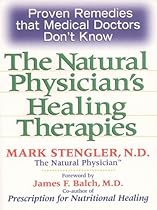 Historically, it was one of the most important medicinal plants used by several tribes of the western United States.
Lomatium was used to treat infections of the respiratory and urinary tracts, as well as of the eyes. The species used by the Indians and the one still popular today is Lomatium dissectum. The Native Americans would also eat the shoots and roots. For medicinal use, a decoction was made by boiling the root in water. This decoction was also used topically for sores, rashes, and cuts. A poultice of lomatium was used for swellings, joint pain, and sprains. Historically, it was one of the most important medicinal plants used by several tribes of the western United States.
Lomatium was used to treat infections of the respiratory and urinary tracts, as well as of the eyes. The species used by the Indians and the one still popular today is Lomatium dissectum. The Native Americans would also eat the shoots and roots. For medicinal use, a decoction was made by boiling the root in water. This decoction was also used topically for sores, rashes, and cuts. A poultice of lomatium was used for swellings, joint pain, and sprains. |
| Kapoor LD, Handbook of Ayurvedic medicinal plants. Boca Raton, FL: CRC Press, 1990, pp. 200-201.
• "... Two animal studies found gymnema extracts doubled the number of insulin-secreting beta cells in the pancreas and returned blood sugars to almost normal." Prakash AO, Mather S, Mather R, Effect of feeding Gymnema sylvestre leaves on blood glucose in beryllium nitrate treated rats. / Ethnopharmacol 1986; 18:143-146. |
John Heinerman
See book keywords and concepts |
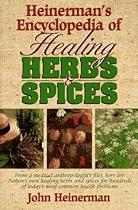 TRACTiIIS
(ATRACTYLODES IAN CI'A)
Brief Description
Atractylis is the name given to several different species of the genus of medicinal plants known as Atractylodes. In Chinese they are collectively called zhu; there is cang zhu ( a blue-green variety) and bai zhu (a white type). The bai zhu kind is rarer and considered to be more therapeutic.
The roots of the atractylis plants, when cut open, reveal a beautiful yellow-orange resin clinging to the interstices. TRACTiIIS
(ATRACTYLODES IAN CI'A)
Brief Description
Atractylis is the name given to several different species of the genus of medicinal plants known as Atractylodes. In Chinese they are collectively called zhu; there is cang zhu ( a blue-green variety) and bai zhu (a white type). The bai zhu kind is rarer and considered to be more therapeutic.
The roots of the atractylis plants, when cut open, reveal a beautiful yellow-orange resin clinging to the interstices. |
| In his book medicinal plants of The Mountain West (Santa Fe: Museum of New Mexico Press, 1979; p. 142), author Michael Moore declared that " the Sages own the lower mountains of southern California, and often form pure stands of several mixed species," so sage is readily available if you live there or in Arizona, New Mexico or western Texas.
For a bold brisk tea that "slaps you down on the outside and wakes you up on the inside," here are the easy-to-follow directions:
1. Boil 1 1/2 pints of water.
2. Add 2 1/2 tbsps. cut fresh or dried sage.
3. Cover, lower heat and simmer 25 minutes.
4. |
| In the published monograph Selected medicinal plants of
India (Bombay: Chemexcil, 1992), a study was cited in which this herb was given to 30 mental patients suffering from anxiety neurosis in doses of 40 militers per day ( in two equally divided doses) for one month; at the end of that time most of their anxiety disorders, panic attacks and similar mood phobias had pretty much dissipated. |
| Like his other medical colleagues, he was at one time averse to using herbs, but eventually came around to considering a few medicinal plants for some of his more serious cases.
One of the plants with which he has experimented has been baby's breath. In stubborn cases of bronchitis, he found that nothing else works quite as well as a hot tea made from the roots of this garden ornamental. His usual method of preparation is to have the patient boil two heaping tablespoons of the chopped fresh or dried roots in one quart of water on medium heat, covered, for 20 minutes. |
Dr. Cass Ingram
See book keywords and concepts |
 These honeys are produced by bees that visit exclusively wild medicinal plants. Such honeys are utterly rare today Currently, only a few types are available, and all of them are harvested in a limited supply. Two examples are Wild Oregano Honey and Wild Thistle Honey. Both are extracted from beehives found in the Mediterranean mountains. In the Middle East wild raw honey is relied upon to settle upset stomach and absolve diarrhea.The honey bees that produce these rare honeys are never fed sugar. All of the honey is produced from plant nectar and sap. These honeys are produced by bees that visit exclusively wild medicinal plants. Such honeys are utterly rare today Currently, only a few types are available, and all of them are harvested in a limited supply. Two examples are Wild Oregano Honey and Wild Thistle Honey. Both are extracted from beehives found in the Mediterranean mountains. In the Middle East wild raw honey is relied upon to settle upset stomach and absolve diarrhea.The honey bees that produce these rare honeys are never fed sugar. All of the honey is produced from plant nectar and sap. |
John Heinerman
See book keywords and concepts |
 An experienced tracker and backwoods survivalist, Tom Brown recounted some of his own childhood experiences with the common cattail in his book, Tom Brown's Guide to Wild Edible and medicinal plants (New York: Berkley Books, 1985; pp.87-88). A portion of that narrative has been included here with the kind permission of the publisher.
"As time passed and we learned more of what the cattail could be used for, we began to experiment and come up with our own ideas. An experienced tracker and backwoods survivalist, Tom Brown recounted some of his own childhood experiences with the common cattail in his book, Tom Brown's Guide to Wild Edible and medicinal plants (New York: Berkley Books, 1985; pp.87-88). A portion of that narrative has been included here with the kind permission of the publisher.
"As time passed and we learned more of what the cattail could be used for, we began to experiment and come up with our own ideas. |
| Over half a dozen authorities on medicinal plants and spices from around the Near East, in places such as Syria, Turkey, Iraq, Egypt, and Greece, have been unanimous in lavishing their praise on this very costly food and dye item.
I was reminded that in the Song of Solomon (one of the books of the Old Testament) a new bride was compared to a garden that did not lack for saffron. A world-famous scholar, who specialized in the ancient Assyrian language, wrote a monograph seven decades ago about some of the plants used by the Babylonians back in 2500 to 2000 B.C. The gentleman's name was R. |
John Boik
See book keywords and concepts |
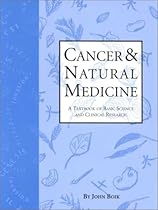 Flavonoids appear to be the active constituents in numerous medicinal plants, and plants that contain flavonoids are widely used in herbal medicine traditions around the world.
Flavonoids can be divided into five categories (Har-borne and Baxter, 1991:324):
1) Anthocyanins, anthochlors, and aurones. Anthocyanins are red-blue pigments in plants (such as found in red to blue fruits). Anthochlors and aruones are yellow pigments found in flowers.
2) Minor flavonoids. Minor flavonoids include flavanones, flavan-3-ols, dihydroflavones, and dihydrochalcones. Flavonoids appear to be the active constituents in numerous medicinal plants, and plants that contain flavonoids are widely used in herbal medicine traditions around the world.
Flavonoids can be divided into five categories (Har-borne and Baxter, 1991:324):
1) Anthocyanins, anthochlors, and aurones. Anthocyanins are red-blue pigments in plants (such as found in red to blue fruits). Anthochlors and aruones are yellow pigments found in flowers.
2) Minor flavonoids. Minor flavonoids include flavanones, flavan-3-ols, dihydroflavones, and dihydrochalcones. |
Rebecca Wood
See book keywords and concepts |
 Next time, however, I'll try talking to them as did Tom Brown's Apache grandfather, as reported in Tom Brown's Guide to Wild Edible and medicinal plants.
"To my amazement, Grandfather carefully began to gather some of the smaller plants, grabbing them at the base and plucking them from the ground with his fingers. In astonishment, I asked him how he could touch those damn plants without getting stung and why the hell would he want to pick the little monsters. He simply said, 'If you talk to them and show no fear, they won't sting. Next time, however, I'll try talking to them as did Tom Brown's Apache grandfather, as reported in Tom Brown's Guide to Wild Edible and medicinal plants.
"To my amazement, Grandfather carefully began to gather some of the smaller plants, grabbing them at the base and plucking them from the ground with his fingers. In astonishment, I asked him how he could touch those damn plants without getting stung and why the hell would he want to pick the little monsters. He simply said, 'If you talk to them and show no fear, they won't sting. |












